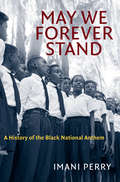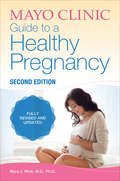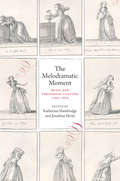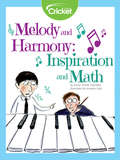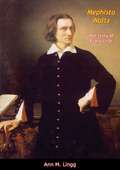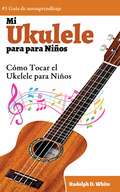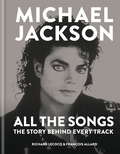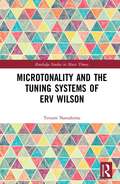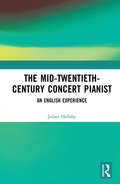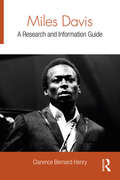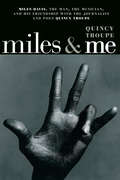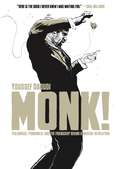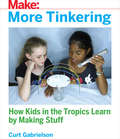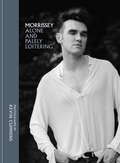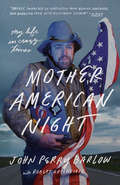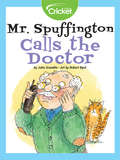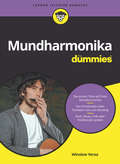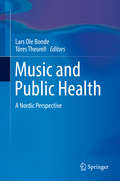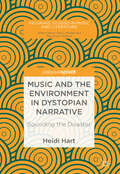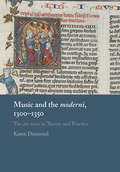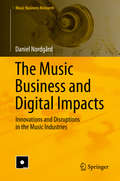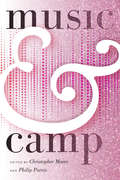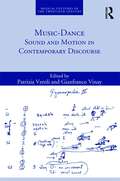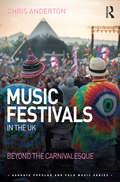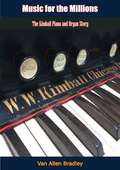- Table View
- List View
May We Forever Stand: A History of the Black National Anthem (The John Hope Franklin Series in African American History and Culture)
by Imani PerryThe twin acts of singing and fighting for freedom have been inseparable in African American history. May We Forever Stand tells an essential part of that story. With lyrics penned by James Weldon Johnson and music composed by his brother Rosamond, "Lift Every Voice and Sing" was embraced almost immediately as an anthem that captured the story and the aspirations of black Americans. Since the song's creation, it has been adopted by the NAACP and performed by countless artists in times of both crisis and celebration, cementing its place in African American life up through the present day. In this rich, poignant, and readable work, Imani Perry tells the story of the Black National Anthem as it traveled from South to North, from civil rights to black power, and from countless family reunions to Carnegie Hall and the Oval Office. Drawing on a wide array of sources, Perry uses "Lift Every Voice and Sing" as a window on the powerful ways African Americans have used music and culture to organize, mourn, challenge, and celebrate for more than a century.
Mayo Clinic Guide to a Healthy Pregnancy
by Myra J. WickAn essential pregnancy resource for all parents-to-be. Mayo Clinic Guide to a Healthy Pregnancy, second edition is an authoritative, yet practical reference manual from the pregnancy experts at the #1 ranked hospital in America. The newly updated book includes information on everything from healthy lifestyle habits to the latest technologies in prenatal care and childbirth. Features include week-by-week updates on baby&’s growth, as well as month-by-month changes that mom can expect. In addition, you&’ll find a forty-week pregnancy calendar, an overview of common pregnancy symptoms, information on safe medicine use, tools to help parents with important pregnancy decisions, and general caregiving advice—information moms and dads can trust to help give their little ones a healthy start. Mayo Clinic Guide to a Healthy Pregnancy, second edition is the collective effort of a team of health care experts who find nothing in medicine more exciting and satisfying than the birth of a healthy child by a healthy mother. Any parent-to-be looking for accurate and authoritative information from a reliable source will surely appreciate this illustrated, easy-to-understand book.
The Melodramatic Moment: Music and Theatrical Culture, 1790–1820
by Katherine G Hambridge Jonathan Hicks James ChandlerWe seem to see melodrama everywhere we look—from the soliloquies of devastation in a Dickens novel to the abject monstrosity of Frankenstein’s creation, and from Louise Brooks’s exaggerated acting in Pandora’s Box to the vicissitudes endlessly reshaping the life of a brooding Don Draper. This anthology proposes to address the sometimes bewilderingly broad understandings of melodrama by insisting on the historical specificity of its genesis on the stage in late-eighteenth-century Europe. Melodrama emerged during this time in the metropolitan centers of London, Paris, Vienna, and Berlin through stage adaptations of classical subjects and gothic novels, and they became famous for their use of passionate expression and spectacular scenery. Yet, as contributors to this volume emphasize, early melodramas also placed sound at center stage, through their distinctive—and often disconcerting—alternations between speech and music. This book draws out the melo of melodrama, showing the crucial dimensions of sound and music for a genre that permeates our dramatic, literary, and cinematic sensibilities today. A richly interdisciplinary anthology, The Melodramatic Moment will open up new dialogues between musicology and literary and theater studies.
Melody and Harmony
by Diana Thistle Tremblay Annette CateDid you know that music is all about math? Every good composer knows their scales, along with the repetition, frequencies, and vibration that go into making harmonies and melodies that are pleasing to hear.
Mephisto Waltz: The Story of Franz Liszt
by Ann M. LinggBeethoven, Brahms, Schumann, Berlioz, Rossini, Wagner, Meyerbeer, Mendelssohn, Chopin, Rubinstein. These musical greats were Franz Liszt’s contemporaries and friends during his long, tempestuous, and productive life—a life lived during one of the richest periods in all musical history.Born in Austria-Hungary, Liszt learned to play the piano at an early age; he was then taken to Vienna to study under the great teacher, Czerny, Beethoven’s own pupil. Before he was fourteen, Liszt played concerts and recitals in Paris and London. Whilst still on the threshold of his fabulous career, Liszt felt dissatisfaction with his worldly life and seriously considered entering the priesthood. But this man, a failure when he lived a conventional life and successful only when wildly extravagant, became instead the leader in the fashionable musical world of Pairs—and eventually of all Europe. It was only in old age that he returned to the spiritual and became the Abbé Liszt.
Mi Ukelele para Niños: Cómo Tocar el Ukelele para Niños
by Rudolph D. WhiteEste libro es la perfecta introducción al Ukelele para niños de todas las edades. Sin partituras, los niños pueden seguir fácilmente los claros y simples diagramas y fotos para aprender sus primeros acordes, tocar canciones divertidas y ganar confianza tocando su primer ukelele! •Instrucciones e ilustraciones fáciles de seguir. •Ejercicios simples para seguir y practicar. •Aprenden a su propio ritmo. •Canciones fáciles y divertidas, acordes y ritmos para tocar. •Simplemente sigue las instrucciones en el libro y los niños estarán tocando ukelele en poco tiempo. Compra este libro ahora
Michael Jackson: The Story Behind Every Track
by François Allard Richard LecocqPlease note: this edition is text only and does not contain images.This is the full story of every single song that Michael Jackson recorded and released during his long and remarkable solo career.With fascinating stories and detailed information on every track - as well as key early songs with The Jackson Five and his legendary dance moves and videos - All the Songs is the complete history of one of the greatest musical legacies of all time.Arranged chronologically by album, expert authors Lecocq and Allard explore the details behind early hits such as ABC and I Want You Back, to solo masterpieces such as Don't Stop 'Til You Get Enough, Billie Jean, Beat It, Smooth Criminal, Black or White, This Is It and more - including outtakes, duets and rare tracks.Explore the magic behind the King of Pop's music with this in-depth, captivating book.
Microtonality and the Tuning Systems of Erv Wilson: Mapping the Harmonic Spectrum (Routledge Studies in Music Theory)
by Terumi NarushimaThis book explores the emerging area of microtonality through an examination of the tuning theories of Erv Wilson. It is the first publication to offer a broad discussion of this influential theorist whose innovations have far-reaching ramifications for microtonal tuning systems. This study addresses the breadth and complexity of Wilson’s work by focusing on his microtonal keyboard designs as a means to investigate his tuning concepts and their practical applications. Narushima examines materials ranging from historical and experimental tunings to instrument design, as well as musical applications of mathematical theories and multidimensional geometry. The volume provides an analysis of some of Wilson’s most significant theoretical ideas, including the Scale Tree, Moments of Symmetry, Constant Structures, and Combination-Product Sets. These theories offer ways to conceptualize musical scales as patterns with structural integrity and whose shapes can be altered to produce infinitely varying forms. The book shows how these structural properties can be used to map scales onto a microtonal keyboard by providing step-by-step guidelines and clearly illustrated examples. Most importantly, it brings together theoretical and practical methods of tuning to enable composers, performers, and instrument designers to explore previously uncharted areas of microtonality, making a significant contribution to the fields of music theory, composition and music technology.
The Mid-Twentieth-Century Concert Pianist: An English Experience
by Julian HellabyIn this book, Julian Hellaby presents a detailed study of English piano playing and career management as it was in the middle years of the twentieth century. Making regular comparisons with early twenty-first-century practice, the author examines career-launching mechanisms, such as auditions and competitions, and investigates available means of career sustenance, including artist management, publicity outlets, recital and concerto work, broadcasts, recordings and media reviews. Additionally, Hellaby considers whether a mid-twentieth-century school of English piano playing may be identified and, if so, whether it has lasted into the early decades of the twenty-first century. The author concludes with an appraisal of the state of English pianism in recent years and raises questions about its future. Drawing on extensive research from a wide variety of primary and secondary sources, this book is structured around case-studies of six pianists who were commencing and then developing their careers between approximately 1935 and 1970. The professional lives and playing styles of Malcolm Binns, Peter Katin, Moura Lympany, Denis Matthews, Valerie Tryon and David Wilde are examined, and telling comparisons are made between the state of affairs then and that of more recent times. Engagingly written, the book is likely to appeal to professional and amateur pianists, piano teachers, undergraduate and postgraduate music students, academics and anyone with an interest in the history of pianists, piano performance and music performance history in general.
Miles Davis: A Research and Information Guide (Routledge Music Bibliographies)
by Clarence Bernard HenryThis research and information guide provides a wide range of scholarship on the life, career, and musical legacy of Miles Davis, and is compiled for an interdisciplinary audience of scholars in jazz and popular music, musicology, and cultural studies. It serves as an excellent tool for librarians, researchers, and scholars sorting through the massive amount of material in the field.
Miles & Me: Miles Davis, the man, the musician, and his friendship with the journalist and poet Quincy Troupe
by Quincy TroupeAn intimate story of Miles Davis, the man, the musician, and his friendship with the young journalist and poet Quincy Troupe--soon to be a major motion picture.Poet, activist and journalist Quincy Troupe's candid account of his friendship with Miles Davis is a revealing portrait of a great musician and an engrossing chronicle of the author's own artistic and personal growth. Miles and Me describes in intimate detail the sometimes harrowing processes of Davis's spectacular creativity and the joys and travails Davis's passionate and contradictory temperament posed to the two men's friendship. Miles and Me shows how Miles Davis, both as an artist and as a black man, influenced Troupe and whole generations of Americans while forever changing the face of jazz.In 1985, Spin magazine hired Troupe to do an exclusive two-part interview with the by-then legendary jazz artist Davis. The hour-and-a-half scheduled interview stretched to ten hours. After it was published, Davis was so enamored of Troupe and the interview that he finally relented to a major publisher's request that he write his autobiography under the condition that they could get Quincy Troupe to write it. Miles: The Autobiography became an instant bestseller and opened up the entire field of popular music autobiography. Years later, Quincy went back to his notes of his time with Miles that had been so important to them both, and produced this more intimate book, Miles and Me, told from his side of their friendship. Miles and Me takes us from St. Louis, where both men grew up, to New York, where both men lived, to Malibu where Miles also kept a home. Troupe also takes us through the entire catalogue of Davis's recordings. Troupe calls his friend "irascible, contemptuous, brutally honest, ill-tempered when things didn't go his way, complex, fair-minded, humble, kind, and a son-of-a-bitch." The author's love and appreciation infuses Miles and Me with a rare quality of grace, and at the same time, throughout the book, Troupe's observations of his friend are keen, sometimes hilariously funny, and truthful, as he knows Miles would want him to be.
Monk!: Thelonious, Pannonica, and the Friendship Behind a Musical Revolution
by Youssef Daoudi"Read this invigorating graphic narrative, then—quickly, before the spell breaks!—play one of Monk's records." —Saul Williams She is Kathleen Annie Pannonica de Koenigswarter, a free-spirited baroness of the Rothschild family. He is Thelonious Sphere Monk, a musical genius fighting against the whims of his troubled mind. Their enduring friendship begins in 1954 and ends only with Monk’s death in 1982.Set against the backdrop of New York during the heyday of jazz, Monk! explores the rare alchemy between two brilliant beings separated by an ocean of social status, race, and culture, but united by an infinite love of music. This breathtaking graphic novel by Youssef Daoudi beautifully captures the life of the “the high priest of bop” in spontaneous, evocative pen and ink that seems to make visible jazz itself.
More Tinkering: How Kids in the Tropics Learn by Making Stuff
by Curt GabrielsonTinkering is a way of learning through hands-on activity -- experimenting with materials and devices to see how they work, taking things apart, making small changes and improvements, exploring and inventing. Tinkering may seem like a form of play -- and it is -- but it is also a powerful way of discovering truths about science, engineering, and math. With this book, Curt Gabrielson follows up on his best-seller Tinkering: Kids Learn by Making Stuff with this all-new volume that features more than three dozen fun and educational tinkering projects based on his years of working with kids in the tropical island nation of Timor-Leste. Step-by-step instructions accompanied by full-color photos take you through a range of enjoyable projects that explore life sciences, physics, chemistry, earth sciences, and mathematics. You'll discover how math is used to make baskets, how fungi create fermentation, how electricity can make a magnet, how the greenhouse effect creates warming, and much more. The author also enlivens his latest batch of tinkering projects with colorful tales of his experiences in the tropic and the lives of the people he' s met there.Inside you'll find:Clear directions for making simple projects and doing activities that teach science, mathematics and engineeringProjects rooted in day to day life and experience in a small, developing nation in the Asian tropicsFull-color photographs throughoutExplicit connections to standard STEAM concepts, K-12Activities doable with less than $5 worth of common materialsThis book is perfect for parents, teachers, and students with an interest in hands-on, tinkering-based science and mathematics education, whether in traditional schools or in home-schooling situations. It will also be of interest to anyone who wants to learn more about developing nations, the culture and unique history of Timor-Leste, tropical nations or Asian cultures, with specific links to Indonesia, Portugal, or Australia.
Morrissey: Alone and Palely Loitering
by Kevin Cummins'One of the greatest music photographers of all time...this book is indispensable to anyone who is a fan of Morrissey, or of great photography 'Classic Pop magazine'Unsurprisingly, given Cummin's history, the photographs are beautifully composed, from the live shots with their webbing of shredded shirts and outstretched arms to the lyrical portraits on staircases or Japanese streets'Q MagazineTaken by renowned photographer Kevin Cummins and featuring hundreds of previously unseen images, Alone and Palely Loitering chronicles Morrissey's world as he emerged from The Smiths and established himself as a solo artist.Breathtaking photographs cover chaotic live performances, intimate portrait sessions and snatched moments backstage and on tour over a ten-year period. Cummins provides insightful commentary on the art of photography and what it was like to work and travel with Morrissey.The book also includes portraits of from fans around the world with Morrissey-inspired tattoos, featuring an essay by literary academic Dr Gail Crowther exploring how this art form is used to display devotion to a unique musician.
Mother American Night: My Life in Crazy Times
by John Perry Barlow Robert GreenfieldJohn Perry Barlow’s wild ride with the Grateful Dead was just part of a Zelig-like life that took him from a childhood as ranching royalty in Wyoming to membership in the Internet Hall of Fame as a digital free speech advocate.Mother American Night is the wild, funny, heartbreaking, and often unbelievable (yet completely true) story of an American icon. Born into a powerful Wyoming political family, John Perry Barlow wrote the lyrics for thirty Grateful Dead songs while also running his family’s cattle ranch. He hung out in Andy Warhol’s Factory, went on a date with the Dalai Lama’s sister, and accidentally shot Bob Weir in the face on the eve of his own wedding. As a favor to Jacqueline Kennedy Onassis, Barlow mentored a young JFK Jr. and the two then became lifelong friends. Despite being a freely self-confessed acidhead, he served as Dick Cheney’s campaign manager during Cheney’s first run for Congress. And after befriending a legendary early group of computer hackers known as the Legion of Doom, Barlow became a renowned internet guru who then cofounded the groundbreaking Electronic Frontier Foundation.His résumé only hints of the richness of a life lived on the edge. Blessed with an incredible sense of humor and a unique voice, Barlow was a born storyteller in the tradition of Mark Twain and Will Rogers. Through intimate portraits of friends and acquaintances from Bob Weir and Jerry Garcia to Timothy Leary and Steve Jobs, Mother American Night traces the generational passage by which the counterculture became the culture, and it shows why learning to accept love may be the hardest thing we ever ask of ourselves.
Mr. Spuffington Calls the Doctor
by John GranditsIn this funny story, Mr. Spuffington cuts his finger, bumps his head, and falls asleep in the sun with his cat, Pablo. With each injury, he fears the worst and is quick to call Dr. John. Kids will enjoy learning about how the human body responds to injuries and begins to heal itself.
Mundharmonika für Dummies (Für Dummies)
by Winslow YerxaDas Buch konzentriert sich auf die diatonische Mundharmonika mit zehn Tonkanälen. Es bietet einen allgemeinen Überblick über das Instrument und darüber, was man als Spieler mitbringen sollte. Behandelt wird auch, was man beim Kauf einer Mundharmonika beachten muss, wie man richtig sowohl Akkorde als auch einzelne Töne spielt, die Bending-Technik zum "Biegen" der Töne, diverse Spieltechniken und Tipps, sowie das Spielen in einer Band oder einem Duo. Dabei hilft eine Grifftabelle, die für jede Übung anzeigt, wo die Finger hinmüssen. Der Autor erklärt außerdem, wie man seine Mundharmonika reparieren oder sogar im Klang verbessern kann und gibt Empfehlungen zu verschiedenen Mundharmonika-Alben.
Music and Public Health: A Nordic Perspective
by Töres Theorell Lars Ole BondeFrom the Nordic countries (Denmark, Norway, Sweden and Finland) comes an exciting source of theoretical approaches, epidemiological findings, and real-life examples regarding the therapeutic and health-enhancing effects of music. Experts across fields including psychology, neurology, music therapy, medicine, and public health review research on the benefits of music in relieving physiological, psychological, and socioemotional dysfunction. Chapters link musical experiences (listening and performing, as well as involvement in movement, dance, and theatre) to a wide range of clinical and non-clinical objectives such as preventing isolation, regulating mood, reducing stress and its symptoms, and treating dementia. And the book’s section on innovative music-based interventions illustrates opportunities for incorporating musical activities into public health programs. Among the topics covered are: · Associations between the use of music, cultural participation and health-related outcomes in adult Scandinavian populations · Music practice and emotion handling · How music translates itself biologically in the body · Music as a forum for social-emotional health · Participation and partnership as core concepts in music and public health · Music therapy as health promotion for mothers and children at a public health clinic Music and Public Health will gain interested readers among researchers, teachers, students, and clinicians in the fields of music education and therapy, as well as researchers and students of public health who are interested in the influence of culture and the arts. The book also will be relevant to administrators in public health services.
Music and the Environment in Dystopian Narrative: Sounding The Disaster (Palgrave Studies In Music And Literature Ser.)
by Heidi HartMusic and the Environment in Dystopian Narrative: Sounding the Disaster investigates the active role of music in film and fiction portraying climate crisis. From contemporary science fiction and environmental film to “Anthropocene opera,” the most arresting eco-narratives draw less on background music than on the power of sound to move fictional action and those who receive it. Beginning with a reflection on a Mozart recording on the 1970s’ Voyager Golden Record, this book explores links between music and violence in Lidia Yuknavitch’s 2017 novel The Book of Joan, songless speech in the opera Persephone in the Late Anthropocene, interrupted lyricism in the eco-documentary Expedition to the End of the World, and dread-inducing hurricane music in the Brecht-Weill opera Rise and Fall of the City of Mahagonny. In all of these works, music allows for a state of critical vulnerability in its hearers, communicating planetary crisis in an embodied way.
Music and the moderni, 1300–1350: The ars nova in Theory and Practice
by Karen DesmondMusic theorists labelled the musical art of the 1330s and 1340s as 'new' and 'modern'. A close reading of writings on music theory and the polyphonic repertory from the first half of the fourteenth century reveals a modern musical art that arose due to specific innovations in music notation. The French ars nova employed as its theoretical fundament a new system for arranging musical time proposed by the astronomer and mathematician Jean des Murs. Challenging prevailing accounts of the ars nova, this book presents the 'new art' within the intellectual context of its time, revises the datings of Jean des Murs's writings on music theory, and presents the intersection of theory and practice for a crucial era in the history of music. Through contemporaneous accounts, Desmond explores how individuals were involved in 'changing' music in early fourteenth-century France, and the technical developments they pursued that precipitated this stylistic change.
The Music Business and Digital Impacts: Innovations and Disruptions in the Music Industries (Music Business Research)
by Daniel NordgårdThis book provides rare insights into the difficult and complex dialogues between stakeholders within and outside the music industries in a time of transition. It builds on a series of recorded meetings in which key stakeholders discuss and assess options and considerations for the music industries’ transition to a digital era. These talks were closed to the public and operated under the Chatham House Rule, which means that they involved a very different type of discussion from those held in public settings, panels or conferences. As such, the book offers a much more nuanced understanding of the industries’ difficulties in adjusting to changing conditions, demonstrating the internal power-struggles and differences that make digital change so difficult. After presenting a theoretical framework for assessing digital change in the music industries, the author then provides his research findings, including quotes from the Kristiansand Roundtable Conference. Following from these findings, he develops three critical concepts that explain the nature as well as the problems of the music industries’ adaptation process. In conclusion, he challenges the general definition of crisis in the music industries and contradicts the widely held view that digitalization is a case of vertical integration.
Music & Camp (Music/culture Ser.)
by Philip Purvis Christopher MooreThis collection of essays provides the first in-depth examination of camp as it relates to a wide variety of twentieth and twenty-first century music and musical performances. Located at the convergence of popular and queer musicology, the book provides new research into camp’s presence, techniques, discourses, and potential meanings across a broad spectrum of musical genres, including: musical theatre, classical music, film music, opera, instrumental music, the Broadway musical, rock, pop, hip-hop, and Christmas carols. This significant contribution to the field of camp studies investigates why and how music has served as an expressive and political vehicle for both the aesthetic characteristics and the receptive modes that have been associated with camp throughout twentieth and twenty-first-century culture.
Music-Dance: Sound and Motion in Contemporary Discourse (Musical Cultures of the Twentieth Century)
by Patrizia Veroli Gianfranco VinayMusic-Dance explores the identity of choreomusical work, its complex authorship and its modes of reception as well as the cognitive processes involved in the reception of dance performance. Scholars of dance and music analyse the ways in which a musical score changes its prescriptive status when it becomes part of a choreographic project, the encounter between sound and motion on stage, and the intersection of listening and seeing. As well as being of interest to musicologists and choreologists considering issues such as notation, multimedia and the analysis of performance, this volume will appeal to scholars interested in applied research in the fields of cognition and neuroscience. The line-up of authors comprises representative figures of today’s choreomusicology, dance historians, scholars of twentieth-century composition and specialists in cognitive science and performance studies. Among the topics covered are multimedia and the analysis of performance; the notational practice of choreographers and the parallel attempts of composers to find a graphic representation for musical gestures; and the experience of dance as a paradigm for a multimodal perception, which is investigated in terms of how the association of sound and movement triggers emotions and specific forms of cognition.
Music Festivals in the UK: Beyond the Carnivalesque (Ashgate Popular and Folk Music Series)
by Chris AndertonThe outdoor music festival market has developed and commercialised significantly since the mid-1990s, and is now a mainstream part of the British summertime leisure experience. The overall number of outdoor music festivals staged in the UK doubled between 2005 and 2011 to reach a peak of over 500 events. UK Music (2016) estimates that the sector attracts over 3.7 million attendances each year, and that music tourism as a whole sustains nearly 40,000 full-time jobs. Music Festivals in the UK is the first extended investigation into this commercialised rock and pop festival sector, and examines events of all sizes: from mega-events such as Glastonbury Festival, V Festival and the Reading and Leeds Festivals to ‘boutique’ events with maximum attendances as small as 250. In the past, research into festivals has typically focused either on their carnivalesque heritage or on developing managerial tools for the field of Events Management. Anderton moves beyond such perspectives to propose new ways of understanding and theorising the cultural, social and geographic importance of outdoor music festivals. He argues that changes in the sector since the mid-1990s, such as professionalisation, corporatisation, mediatisation, regulatory control, and sponsorship/branding, should not necessarily be regarded as a process of transgressive 'alternative culture’ being co-opted by commercial concerns; instead, such changes represent a reconfiguration of the sector in line with changes in society, and a broadening of the forms and meanings that may be associated with outdoor music events.
Music for the Millions: The Kimball Piano and Organ Story
by Van Allen BradleyIn Music for the Millions, author Van Allen Bradley tells the story of a firm which, at the time of this book’s original publication in 1962, had endured for 100 years.But the Kimball Piano and Organ Company accomplished more than simply surviving a century—it played a dominant role in the development of the industry of which it was a part.The company started as a piano dealership in Chicago in 1857 as W.W. Kimball and Company by William Wallace Kimball (1828-1904). In 1864, Kimball moved from its earliest location in the corner of a jewelry store to sales rooms in the Crosby Opera House. The Great Chicago Fire destroyed all of Kimball’s commercial assets in 1871, but he continued selling from his home, and rebuilt his dealership business.In 1877, W.W. Kimball began assembling its own reed organs, and after three years the company began offering organs made entirely in-house. In 1882, the Kimball company was incorporated, and an expansive factory was built to produce reed organs; soon, the factory was producing 15,000 organs a year—the world’s largest organ maker.In 1887, Kimball began building a five-story factory for making its own pianos, and the next year produced 500 instruments of indifferent quality. By 1893 at the World’s Columbian Exposition, at which Kimball received the “Worlds Columbian Exposition Award,” Kimball was known for high quality, efficiency in manufacture, and aggressive sales practices, using 35-40 traveling salesmen to cover cities and remote areas.In 1959, the W.W. Kimball Company was purchased from the last remaining Kimball family heir by Mr. Arnold F. Habig and became a wholly owned subsidiary of The Jasper Corporation. Piano production was relocated to the small, southern Indiana town of West Baden, Indiana, where the company was rejuvenated and once again began to grow—10 years after the purchase, Kimball was once again the world’s largest piano company.
